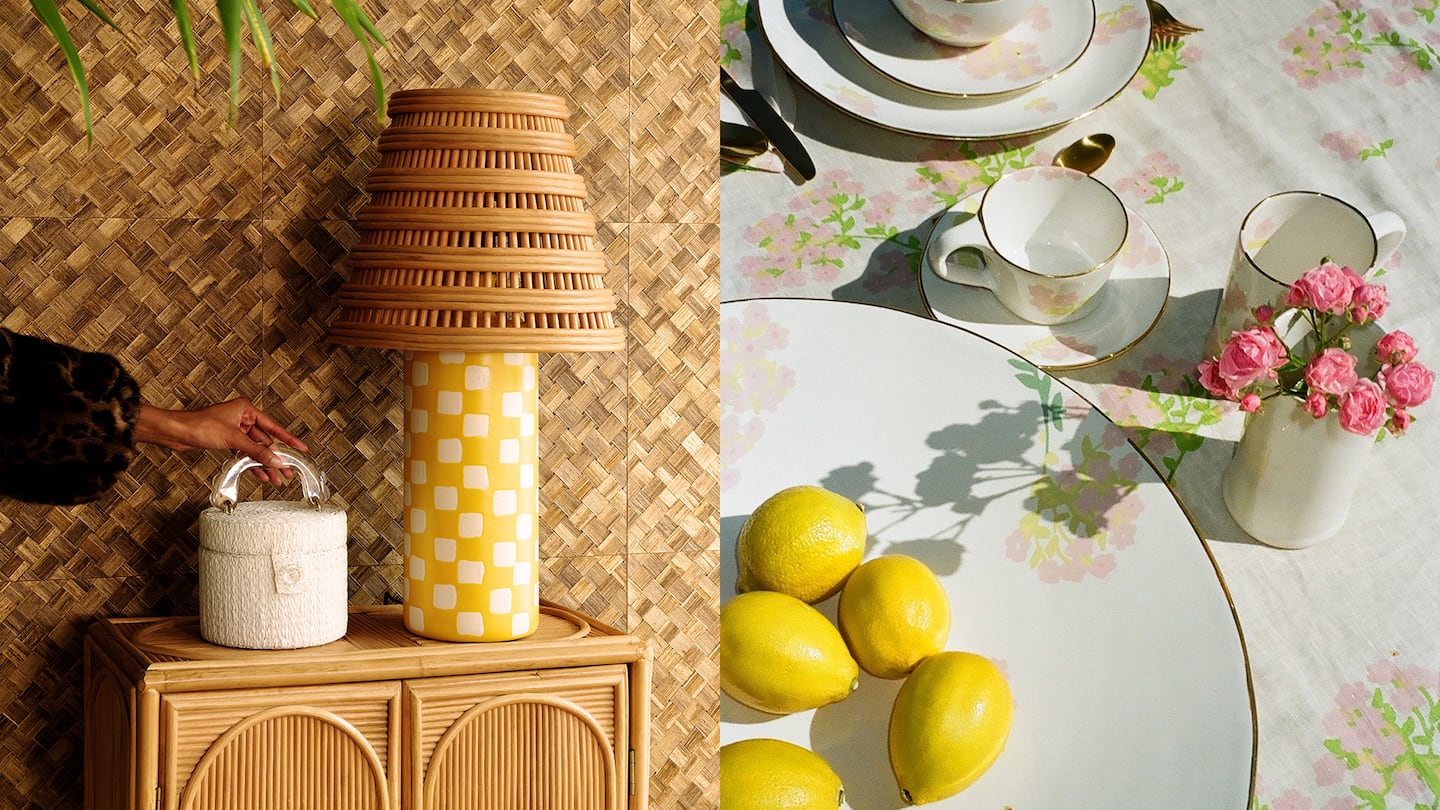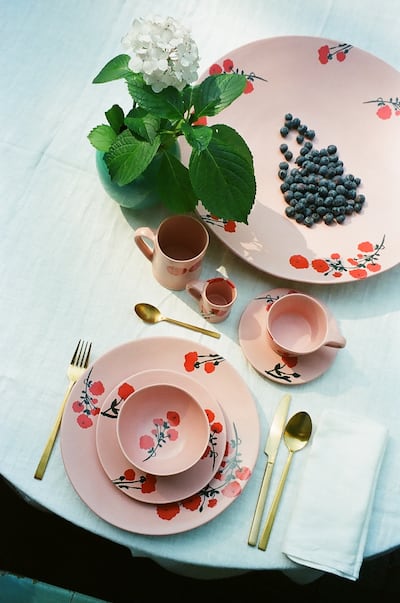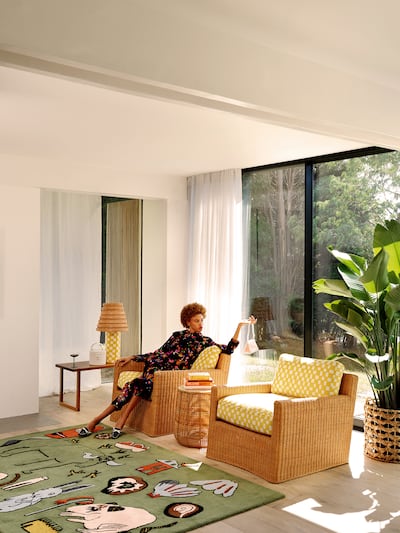
The Business of Fashion
Agenda-setting intelligence, analysis and advice for the global fashion community.

Agenda-setting intelligence, analysis and advice for the global fashion community.

 Opens in new window
Opens in new windowVisitors to Simon Miller’s website will soon find some surprising additions to the usual assortment of ribbed top-and-trouser sets, heeled clogs and handbags. Starting next month, the brand will sell everything from towels and pillows to sculptures, paintings and vintage furniture.
Simon Miller isn’t alone in tempting customers to overhaul their homes in addition to their wardrobes. This year, a flurry of fashion labels have newfound ambitions in the space, betting shoppers who’ve stopped splurging on evening gowns and stilettos will fall for rugs, plates, vases and chairs. They join brands like Ralph Lauren and Fendi, which have been in the home business for decades, as well as fast-fashion players like Zara-owner Inditex and H&M group.
The home goods market was expanding pre-Covid, with global sales rising 3.4 percent last year to $682 billion, according to Euromonitor International. They’ve dipped in 2020, though the decline is mild compared with plunging apparel revenue. And Euromonitor predicts sales of kitchen and dining items — the core of many fashion brands' newer home offerings — will rise 1.3 percent to $93.7 billion this year.
In the US, the market has been particularly strong. Market research company NPD Group is predicting non-electric housewares will enjoy 13 percent growth over the holiday season this year in the US.
ADVERTISEMENT
“What the pandemic did is it just threw fire on this,” said Joe Derochowski, vice president and home industry advisor for the NPD Group. “It has actually helped fuel growth, in part because now you’re just spending more time in the home.”
It’s a universe with a radically different rhythm from fashion.
At Matchesfashion, sales in the home category have doubled year-on-year since April. Blankets and throws from Pendleton and Elder Statesman are selling particularly well, as are vases from Anissa Kermiche and Reflections Copenhagen, said senior buyer Chelsea Power.
“It becomes almost like dressing up, but instead of dressing yourself, you’re dressing your home and you’re dressing your table,” said Aquazzura founder Edgardo Osorio, who will launch his new Aquazzura Casa business with a collection of tableware next Spring.
In the secondhand market, The RealReal is experiencing strong demand for homeware and art, even as sales of apparel and footwear are lagging, chief executive Julie Wainwright said on a call with investors earlier this month.

Antwerp-based label Bernadette presented its debut collection of home linens and ceramics (plates, bowls and mugs) to buyers alongside its Spring/Summer 2021 apparel collection. At €35 for a side plate and €330 for a large platter it’s also a new entry point into the brand, whose dresses are usually priced between €500 and €1,000.
Almost every one of its wholesale partners bought into the new home line alongside the clothes, according to the brand.
“They were pleasantly surprised to see how [our brand has] developed and to see how it all comes together,” said Charlotte De Geyter, who co-founded the brand in 2018 with her mother Bernadette De Geyter.
Fashion brands see home goods as a natural fit because the same aesthetic consumers love to see in a dress can often translate into dinner plates and ottomans. The similarities often end there. Unlike clothes, which are relatively easy and affordable to ship, home goods can be fragile or bulky. The industry operates with longer lead times and different processes of development, production and quality control. Plus, consumers who swap wardrobes from season to season might want to eat off their Dior plates for years or even decades; functionality matters as much as design.
ADVERTISEMENT
“It’s a universe with a radically different rhythm from fashion,” said Isabelle Dubern-Mallevays, co-founder of interior design retailer The Invisible Collection and former creative director of Dior Maison. “Brands have to have a different mindset and treat this activity separately.”
That’s why British label Shrimps partnered with home retailer Habitat for its segue into home goods. The collaboration began in 2018 with bedding and cushions, but for its second iteration this year, it spanned table lamps, armchairs and cabinets woven from rattan.
“As an independent brand, we wouldn’t even know how to source that, let alone how to technically build a chair,” said Nikole DeSantis, the brand’s commercial director. “We can do coats, but we have no idea about furniture. … If you don’t have that skill-set as a brand it’s a logistical nightmare.”

Even large fashion brands often turn to licensing deals for their furniture. Versace outsourced its furniture business with a view to scale it up through a license granted to Lifestyle Design Group in September.
“We will now be able to be more ambitious and grow the collection even further thanks to the expertise of our new partners,” Dontella Versace said in a statement at the time.
Aquazzura’s Osorio set up Aquazzura Casa as a sister company to its core footwear label with new design, development and sales teams. He appointed Fiona Leahy, whose event design and production company creates table-scapes for fashion’s glitziest names, as co-creative director of the new venture.
“I love interiors, but I [wanted] to hire a professional like Fiona who could also guide me through all the specifics of the issues of design,” he said.
Where the fashion industry does have expertise is in branding and marketing. Particularly within the luxury space, selling aspiration is intrinsic to what brands do. This is important for big ticket home purchases, where storytelling helps drive sales.
ADVERTISEMENT
“There’s something to be said about the power of a brand and making people dream of our specific dream: the dream of Italy, the dream of the dolce vita,” said Osorio. “People love buying into a world ... of a brand.”
Plus, established fashion names have the advantage of an existing fanbase that are eager to buy into their story. Garnering awareness and drumming up excitement isn’t as much of a battle for an established fashion brand as it would be for a new speciality business.
Fashion players can stand out against specialist home goods brands by ensuring collections lean into a brand’s specific point of view, said Dubern-Mallevays. Fashion home goods have to go beyond functionality and play to the customer’s emotional desire to be part of a brand universe.
“You don’t change plates like you change It bags,” said Dubern-Mallevays. “There is a sentimental link, more intimate than for fashion.”
Related Articles:
Why Luxury Retailers Are Making a Play for Housewares
Now That Everyone Has Sweatpants, What Else Do They Want to Buy?
The company, under siege from Arkhouse Management Co. and Brigade Capital Management, doesn’t need the activists when it can be its own, writes Andrea Felsted.
As the German sportswear giant taps surging demand for its Samba and Gazelle sneakers, it’s also taking steps to spread its bets ahead of peak interest.
A profitable, multi-trillion dollar fashion industry populated with brands that generate minimal economic and environmental waste is within our reach, argues Lawrence Lenihan.
RFID technology has made self-checkout far more efficient than traditional scanning kiosks at retailers like Zara and Uniqlo, but the industry at large hesitates to fully embrace the innovation over concerns of theft and customer engagement.